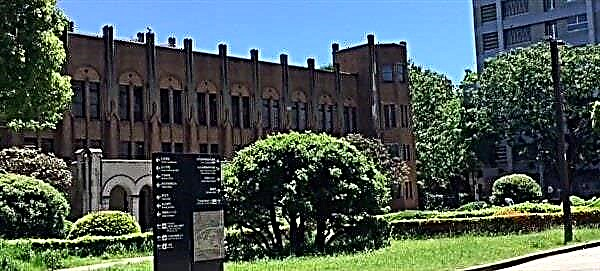Most often, German specialists are referred to by patients with malignant tumors, in particular with esophageal cancer. Treatment of esophageal cancer in Germany requires the involvement of specialists in many areas, namely gastroenterology, oncology, surgery, radiology and some others.

Features of the medical system in Germany
The healthcare system in Germany is considered to be one of the best in the world. About 250,000 patients from all over the world come here annually for treatment. Such a high degree of trust among foreign patients is quite justified, because in Germany only the latest technological developments are used for diagnostics and treatment, which help to identify the causes of diseases as accurately as possible and fight them.
Not the last place in the development of German medicine is played by generous funding from the state budget. The funds are used to develop new treatment methods and equip hospitals with medical equipment. Medical centers attach particular importance to research on cancer and HIV.
Better than Germany in Europe is financed only by the Swiss health care system.
You can learn more about the quality of service provision in German medical institutions from the article "Medicine in Germany".
Diagnostic methods
At the first stage of diagnosis, German doctors use the following methods:
- esophagoscopy - an esophagogastroscope, a special device with illumination at the end, which allows examining the condition of the walls of the esophagus, is inserted through the patient's mouth opening;
- biopsy - collection of biological material from the place of origin of cancer cells for the purpose of their further examination under a microscope;
- X-ray - allows you to determine the exact location of the tumor and its size.
After the presence of malignant cells has been confirmed, other methods are used that allow a more thorough examination of the body for the presence of metastases and establish the stage:
- endo-ultrasound - using this method, the depth of the location of malignant cells and the condition of nearby lymph nodes are examined;
- chest x-ray - checking for metastases in the lungs and lymph nodes;
- computed tomography (CT) - the method allows you to examine the state of the chest in a section in many layers, the image is displayed on the screen and has a high resolution, which ensures accurate identification of metastases, the size and length of malignant cells;
- Positron emission tomography (PET) is a method of using radionuclide isotopes that are illuminated in places of high metabolism, a very effective method for detecting metastases.

Treatment methods
In the treatment of esophageal cancer, both classical methods of treating oncological diseases are used, as well as special methods developed taking into account the inaccessibility of neoplasms in the esophagus. The classic methods include the following:
- surgical operation (resection of the affected area together with part of the esophagus, in place of which a prosthesis is placed);
- radiation therapy - irradiation of an area affected by cancer cells with gamma waves;
- chemotherapy - the use of drugs that destroy cancer cells.
All of the above methods can be used both as individual methods of treatment, and in combination with others, it depends on the stage of the disease. In addition to these methods, specialists of German oncological clinics resort to additional methods of treatment used in cases of cancer of the esophagus and stomach:
- endoscopic resection;
- photodynamic therapy;
- brachytherapy.
Endoscopic resection
Endoscopic resection is a method of removing a tumor by introducing a special drug into the submucous layer of the esophagus, followed by separating the neoplasm and removing it using an endoscope. This method is used if the tumor is small and located no deeper than the mucous layer of the esophagus. In 3-13% of cases of tumor extraction by endoscopic resection, complications in the form of perforation and bleeding can be observed, but often these unpleasant consequences are eliminated with the help of an endoscope.
Photodynamic treatment
Photodynamic therapy is a method that is applied at the very end of treatment if a positive result has not been achieved. A photosensitive substance is injected into the area affected by malignant cells, after which it is exposed to a laser device. Under the influence of a photo source, a photochemical reaction occurs in the neoplasm, as a result of which cancer cells die.
Brachytherapy method
Brachytherapy is a method that uses gamma-wave radiation to target the affected area of malignant cells. It consists in the introduction into the body next to the tumor of a radioactive capsule, which is capable of irradiating cancer at an insignificant, short distance.
Like radiation therapy, brachytherapy can be used before and after surgery to shrink swelling and prevent recurrences.
Rehabilitation course
After removal of the tumor, the patient definitely needs rehabilitation in order to prevent relapses and improve overall health. The first time after the removal of cancer cells, the patient will need help with food intake, due to damage to a part of the esophagus during treatment.
In addition, during the rehabilitation, the patient is provided with psychological support, accustomed to diet and further lifestyle necessary for a complete recovery. Rehabilitation centers, in which patients will be offered to undergo a course, are mainly located at the clinics where the treatment was carried out.

How to organize your trip
In order to go to Germany for treatment, you either need to contact the clinic of your choice and organize the entire trip yourself or use the services of intermediary firms.
In the case of an independent trip, you must do the following:
- choose a clinic, find contacts for feedback;
- compose and send a letter in German or English, in which to describe your problem, indicate the diagnosis made in your home country and ask about the approximate prices for diagnosis and treatment. Attach epicrises translated into German or English to the letter;
- if the amount indicated in the reply letter suits you, then the next step will be to transfer the deposit to the clinic's account;
- send a letter with a request to send an invitation on behalf of the head physician for a visa;
- discuss with the doctor the date of hospitalization;
- book tickets and accommodation;
- apply for a visa through the German embassy or consulate;
- find an interpreter who will accompany you during the examination and treatment.
If you decide to use the services of intermediary firms, then you will not need to perform all these steps. You will be assisted in negotiations with the head physician, booking tickets, accommodation, finding an interpreter and preparing documents for a visa.
The only thing that you will need to do on your own is to apply to the embassy or consulate with a ready-made package of documents. It is much easier to travel to Germany for treatment through such a company: the main thing is, keep in mind that the total cost of the trip in this case will be somewhat more expensive.
Approximate cost of medical services
The price for one or another type of medical service may differ depending on the clinic you apply to, but the average rates in German medical institutions in 2021 are as follows.
| Type of medical services | Estimated cost in EUR |
|---|---|
| Consultation with a surgeon | 300-500 |
| Gastroenterologist consultation | from 500 |
| Consultation with an oncologist | from 350 |
| Endoscopy + biopsy | 5000-5500 |
| PET-CT | 1000-2000 |
| Scintigraphy | 900-1000 |
| Cytological examination of biopsy | from 900 |
| General blood analysis | 200-300 |
| Chemotherapy | 2000-3500 |
| Radiation therapy | 20 000-25 000 |
The best German clinics
Many medical institutions have proven themselves in the successful treatment of oncological diseases. The following several clinics can be distinguished:
- Asklepios Clinic, Hamburg. In the diagnosis and treatment of esophageal cancer (as well as bowel cancer, rectal cancer, stomach cancer, liver cancer, pancreatic cancer and many others), this clinic employs specialists in the areas of gastroenterology, oncology, radiology, and surgery. Leading specialists in the treatment of esophageal cancer are oncologist-gastroenterologist Jürgen Pohl and surgeon-oncologist Karl Jürgen Oldhafer.
- Vivantes Clinic, Berlin. A large complex consisting of many medical centers specializing in narrow areas. Vivantes cooperates with the Charite University Hospital. Professor Ernst Späth-Schwalbe is responsible for oncology and gastroenterology at the clinic.
- Academic Hospital Solingen, Solingen. The hospital is multidisciplinary. The Department of Gastroenterology, which deals with the treatment of oncological diseases of the abdominal cavity, inflammation of the gastrointestinal tract, stomach ulcers and many others, is headed by Professor Boris Pfeiffenbach.
- Nord Clinic Alliance (Department of Oncology), Bremen. The department deals with the treatment of breast, prostate, stomach and many other cancers. The head physician of the Department of Oncology is Professor Jörg Griotike.
Conclusion
Germany is recognized as one of the best countries in the world in terms of cancer treatment. Patients with malignant tumors of various organs, including the esophagus, are successfully treated here.
For the diagnosis and treatment of the latter, Germany uses both classical methods of treating cancer - surgery, radiation therapy, chemotherapy - and special methods - brachytherapy, endoscopic resection, photodynamic therapy, which allow getting to malignant cells inside the esophagus.
Many medical complexes have rehabilitation centers where cancer patients can recover their health.











